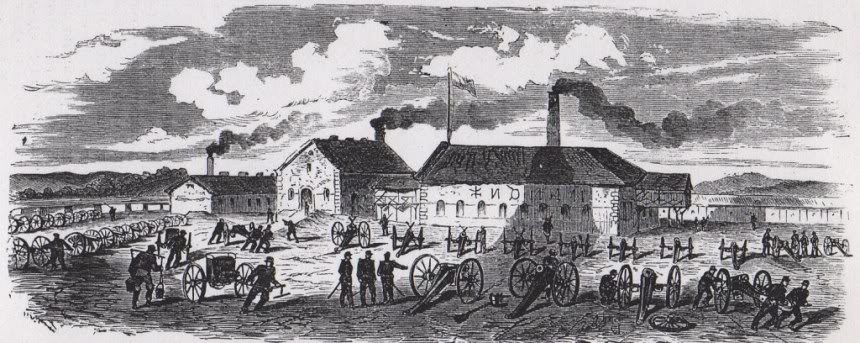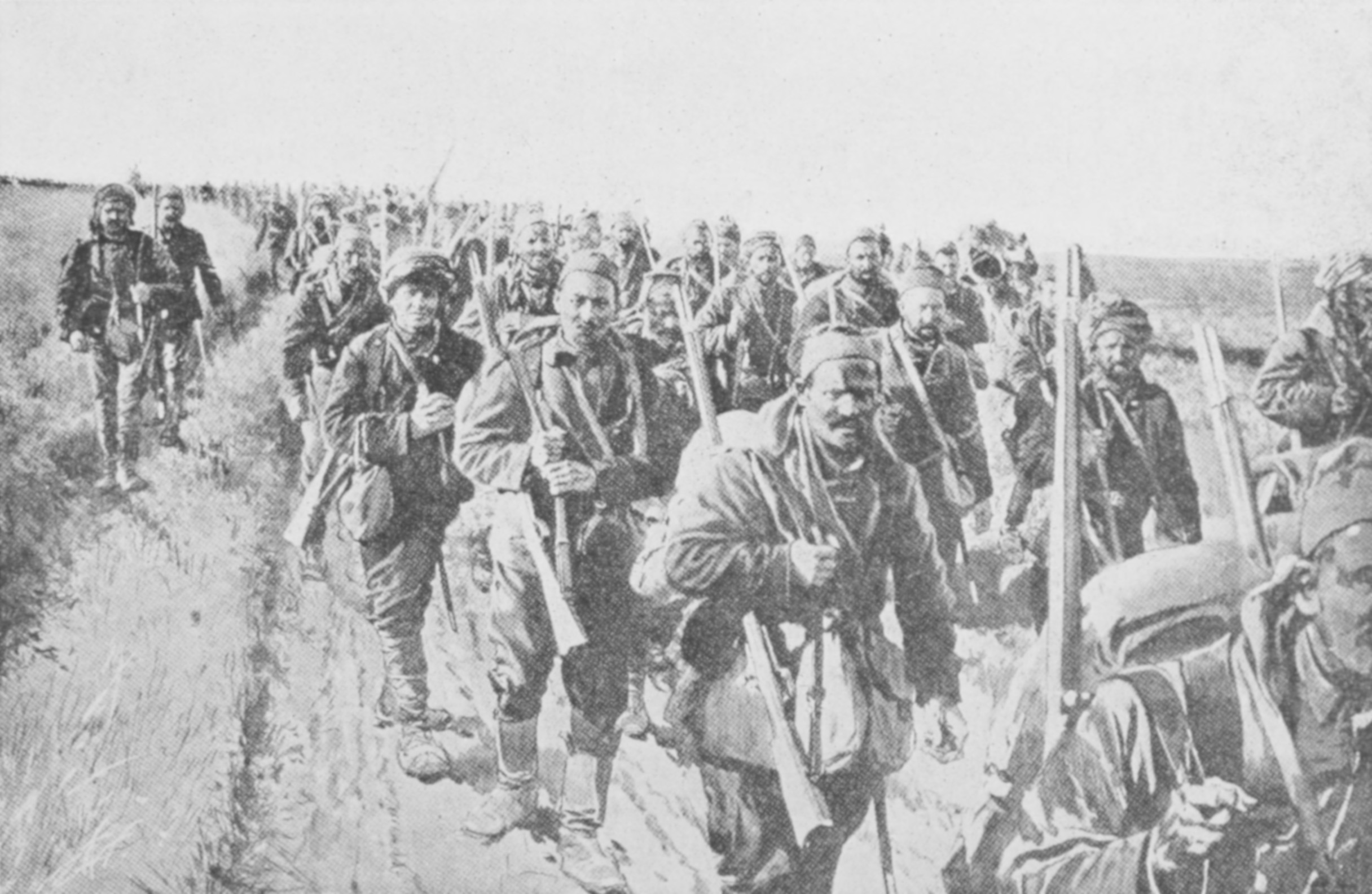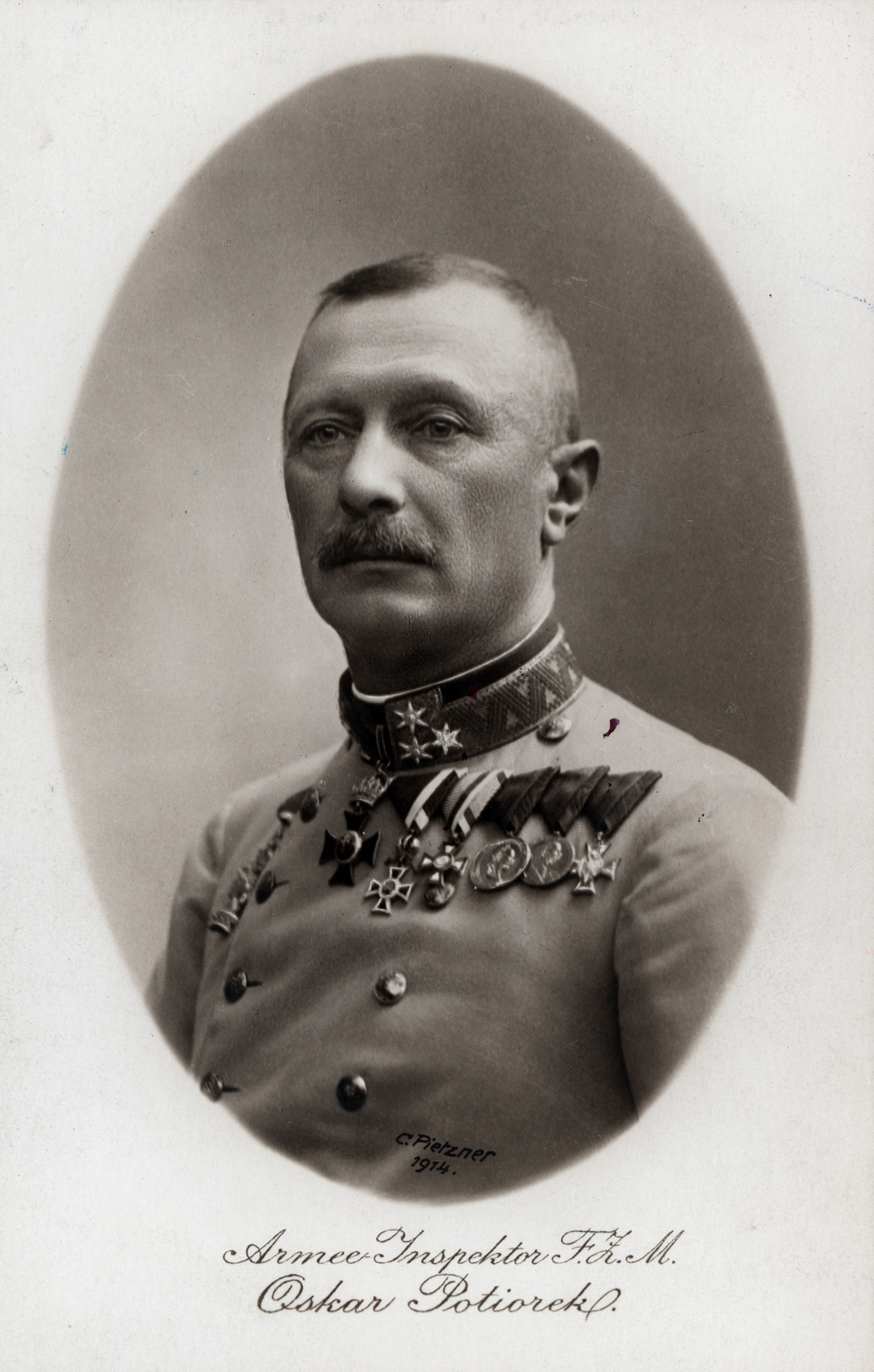|
Petar Leković
Petar Leković (23 November 1893 – 13 June 1942), was a Serbian soldier active in both World War I and World War II. A stonecutter by profession, Leković was declared the first People's Hero of Yugoslavia. As a soldier of the Serbian Army, he participated in the First World War, during 1914 and 1915. He distinguished himself as a brave and capable fighter, but due to his wounds, he was captured in the fall of 1915 in the vicinity of Peć. He spent the rest of the war in Hungarian captivity near Budapest. After the end of the war, he returned to his hometown and learned the stone-cutting craft, and soon after he got married and moved to the village of Recice near Požega. He traveled extensively in search of work, mostly in western Serbia. In the post-WWI period he became a sympathizer of the Communist Party of Yugoslavia, and because of his expressed righteousness and solidarity, he often came into conflict with his employers, as well as with the government. After 1938, he re ... [...More Info...] [...Related Items...] OR: [Wikipedia] [Google] [Baidu] |
Požega, Serbia
Požega ( sr-cyr, Пожега, ), formerly Užička Požega ( sr-cyr, Ужичка Пожега), is a town and municipality located in the Zlatibor District of western Serbia. The population of the town is 12,362, while the municipality has 25,988 inhabitants. The town also has a non-profit organization, called Forca Požega. Settlements Aside from the town of Požega, the municipality includes the following settlements: * Bakionica * Velika Ježevica * Visibaba * Vranjani * Glumač * Godovik * Gornja Dobrinja * Gorobilje * Gugalj * Donja Dobrinja * Dražinovići * Duškovci * Zaselje * Zdravčići * Jelen Do * Kalenići * Lopaš * Loret * Ljutice * Mađer * Mala Ježevica * Milićevo Selo * Mršelji * Otanj * Papratište * Pilatovići * Prijanovići * Prilipac * Radovci * Rasna * Rečice * Roge * Rupeljevo * Svračkovo * Srednja Dobrinja * Tabanovići * Tvrdići * Tometino Polje * Tučkovo * Uzići * Čestobrodica Demographics Acc ... [...More Info...] [...Related Items...] OR: [Wikipedia] [Google] [Baidu] |
Serbia
, image_flag = Flag of Serbia.svg , national_motto = , image_coat = Coat of arms of Serbia.svg , national_anthem = () , image_map = , map_caption = Location of Serbia (green) and the claimed but uncontrolled territory of Kosovo (light green) in Europe (dark grey) , image_map2 = , capital = Belgrade , coordinates = , largest_city = capital , official_languages = Serbian language, Serbian , ethnic_groups = , ethnic_groups_year = 2022 , religion = , religion_year = 2022 , demonym = Serbs, Serbian , government_type = Unitary parliamentary republic , leader_title1 = President of Serbia, President , leader_name1 = Aleksandar Vučić , leader_title2 = Prime Minister of Serbia, Prime Minister , leader_name2 = Đuro Macut , leader_title3 = Pres ... [...More Info...] [...Related Items...] OR: [Wikipedia] [Google] [Baidu] |
Raška, Serbia
Raška ( sr-cyr, Рашка, ) is a town and municipality located in the Raška District of southwestern Serbia. The municipality has a population of 21,498 people, while the town has a population of 6,291 people (2022 census). It covers an area of 670km2 (259 sq. mi.). The town is situated on the rivers Raška River, Raška and Ibar River, Ibar. History The town and municipality bears the name of the historical Raška region. It was the first Nemanjić dynasty, Nemanjić’s independent country and the center of culture and the statehood of Serbs in the middle ages. Raška as a settlement was first mentioned in 1835 and the first Urban Plan of Raška dates back to 1844. From 1929 to 1941, Raška was part of the Zeta Banovina of the Kingdom of Yugoslavia. Demographics According to the 2011 census results, the municipality of Raška has 24,678 inhabitants. Ethnic groups The ethnic composition of the municipality: Economy The following table gives a preview of total number of ... [...More Info...] [...Related Items...] OR: [Wikipedia] [Google] [Baidu] |
Kraljevo
Kraljevo ( sr-Cyrl, Краљево, ) is a List of cities in Serbia, city and the administrative center of the Raška District in central Serbia. It is situated on the confluence of West Morava and Ibar River, Ibar, in the geographical region of Šumadija, between the mountains of Kotlenik in the north, and Stolovi in the south. In 2022 the city urban area has a population of 57,432 inhabitants, while the city administrative area has 110,196 inhabitants. With an area of 1530 km2, it is the List of cities in Serbia, largest municipality (after Belgrade) in Serbia by area. Name Formerly known as Rudo Polje (Рудо Поље), Karanovac (Карановац) and Rankovićevo (Ранковићево), Kraljevo received its present name, meaning "the King's Town", from King Milan I of Serbia in honor of his own coronation and six Serbian kings that had been crowned in that area. The modern coat of arms of the city features seven crowns symbolizing the seven kings. History and si ... [...More Info...] [...Related Items...] OR: [Wikipedia] [Google] [Baidu] |
Kragujevac
Kragujevac ( sr-Cyrl, Крагујевац, ) is the List of cities in Serbia, fourth largest city in Serbia and the administrative centre of the Šumadija District. It is the historical centre of the geographical region of Šumadija in central Serbia, and is situated on the banks of the Lepenica (Great Morava), Lepenica River. According to the 2022 census, City of Kragujevac has 171,186 inhabitants. Kragujevac was the first capital of modern Serbia and the first constitution in the Balkans, the Sretenje Constitution, was proclaimed in the city in 1835. A unit of the Scottish Women's Hospitals for Foreign Service was located there in World War I. During the Second World War, Kragujevac was the site of a Kragujevac massacre, massacre by the Nazis in which 2,778 Serb men and boys were killed. Modern Kragujevac is known for its large munitions (Zastava Arms) and automobile (Fiat Serbia) industries, as well as its status as an education centre housing the University of Kragujevac, one ... [...More Info...] [...Related Items...] OR: [Wikipedia] [Google] [Baidu] |
Grabovac (Obrenovac)
Grabovac is a village located in the municipality of Obrenovac, Belgrade Belgrade is the Capital city, capital and List of cities in Serbia, largest city of Serbia. It is located at the confluence of the Sava and Danube rivers and at the crossroads of the Pannonian Basin, Pannonian Plain and the Balkan Peninsula. T ..., Serbia. As of 2011 census, it has a population of 2,401 inhabitants. Grabovac Monastery, founded in 14th century is located in the village. It was restored in 1859 and has a status of a cultural monument. References External links Suburbs of Belgrade {{BelgradeRS-geo-stub ... [...More Info...] [...Related Items...] OR: [Wikipedia] [Google] [Baidu] |
Typhus
Typhus, also known as typhus fever, is a group of infectious diseases that include epidemic typhus, scrub typhus, and murine typhus. Common symptoms include fever, headache, and a rash. Typically these begin one to two weeks after exposure. The diseases are caused by specific types of bacterial infection. Epidemic typhus is caused by '' Rickettsia prowazekii'' spread by body lice, scrub typhus is caused by '' Orientia tsutsugamushi'' spread by chiggers, and murine typhus is caused by '' Rickettsia typhi'' spread by fleas. Vaccines have been developed, but none is commercially available. Prevention is achieved by reducing exposure to the organisms that spread the disease. Treatment is with the antibiotic doxycycline. Epidemic typhus generally occurs in outbreaks when poor sanitary conditions and crowding are present. While once common, it is now rare. Scrub typhus occurs in Southeast Asia, Japan, and northern Australia. Murine typhus occurs in tropical and subtropi ... [...More Info...] [...Related Items...] OR: [Wikipedia] [Google] [Baidu] |
Obrenovac
Obrenovac ( sr-cyr, Обреновац, ) is a municipality of the city of Belgrade. According to the 2022 census results, the municipality has a population of 68,882 inhabitants, while the urban area has 25,380 inhabitants. The old name for Obrenovac was Palež. The largest Serbian thermal power plant TPP Nikola Tesla is located on the outskirts of the municipality. Stubline transmitter, one of the most powerful broadcasting stations ever built is also situated in this municipality, Obrenovac was also submerged and completely evacuated during the 2014 Southeast Europe floods. Geography Obrenovac is situated 30 km south-west of central Belgrade near bends of the river Sava to the north. The river Kolubara flows to the east of the town on its way to join the Sava. Total land area of the municipality of Obrenovac is . Apart from the town, it consists of the following villages: Some of the neighborhoods in the town are Topolice, Rojkovac, Dudovi, Rvati, Muzička kolonija, S ... [...More Info...] [...Related Items...] OR: [Wikipedia] [Google] [Baidu] |
Sava
The Sava, is a river in Central Europe, Central and Southeast Europe, a right-bank and the longest tributary of the Danube. From its source in Slovenia it flows through Croatia and along its border with Bosnia and Herzegovina, and finally reaches Serbia, feeding into the Danube in its capital, Belgrade. The Sava is long, including the Sava Dolinka headwater rising in Zelenci, Slovenia. It is the largest List of tributaries of the Danube, tributary of the Danube by volume of water, and the second-largest after the Tisza in terms of catchment area () and length. It drains a significant portion of the Dinaric Alps region, through the major tributaries of Drina, Bosna (river), Bosna, Kupa, Una (Sava), Una, Vrbas (river), Vrbas, Lonja, Kolubara, Bosut (river), Bosut and Krka (Sava), Krka. The Sava is one of the longest rivers in Europe and among the longest tributaries of another river. The population in the Sava River basin is estimated at 8,176,000, and is shared by three capit ... [...More Info...] [...Related Items...] OR: [Wikipedia] [Google] [Baidu] |
Battle Of Kolubara
The Battle of Kolubara ( sr-Cyrl, Колубарска битка, ) was fought between Austria-Hungary and Serbia in November and December 1914, during the Serbian Campaign of 1914. It commenced on 16 November, when the Austro-Hungarians under the command of Oskar Potiorek reached the Kolubara river during their third invasion of Serbia that year, having captured the strategic town of Valjevo and forced the Serbian army to undertake a series of retreats. The Serbs withdrew from Belgrade on 29–30 November, and the city soon fell under Austro-Hungarian control. On 2 December, the Serbian army launched a surprise counterattack all along the front. Valjevo and Užice were retaken by the Serbs on 8 December. The Austro-Hungarians retreated to Belgrade, which 5th Army commander Liborius Ritter von Frank deemed untenable. The Austro-Hungarians abandoned the city between 14 and 15 December and retreated into Austria-Hungary, allowing the Serbs to retake their capital the followi ... [...More Info...] [...Related Items...] OR: [Wikipedia] [Google] [Baidu] |
Battle Of Drina
The Battle of the Drina ( Serbian: , ) was fought between Serbian and Austro-Hungarian armies in September 1914, near Loznica, Serbia, during the First Serbian campaign of World War I. After a first failed invasion of Serbia where he lost 40,000 men, Oskar Potiorek, the Austro-Hungarian commander of the Balkanstreitkräfte, launched a new offensive across the River Drina at the western Serbian border; after successfully crossing the river the night of 7—8 September the Austro-Hungarian forces were stopped facing strong Serbian defensive positions. In the meantime, the Serbian army was forced to end their offensive into Austrian Syrmia and regroup their forces to face the threat. Meanwhile, in the far west, a smaller force of Serbian and Montenegrin troops moved into Bosnia, taking Višegrad. In the South, the Austrians took Shabatz (Šabac). On 17 September, a counterattack pushed the Austrians back to the Drina, where both sides settled into trench warfare. The Battle ... [...More Info...] [...Related Items...] OR: [Wikipedia] [Google] [Baidu] |
Battle Of Cer
The Battle of Cer was a military campaign fought between Austria-Hungary and Serbia in August 1914, starting three weeks into the Serbian Campaign of 1914, the initial military action of the First World War. It took place around Cer Mountain and several surrounding villages, as well as the town of Šabac. The battle, part of the first Austro-Hungarian invasion of Serbia, began on the night of 15 August when elements of the Serbian 1st Combined Division encountered Austro-Hungarian outposts that had been established on the slopes of Cer Mountain earlier in the invasion. The clashes that followed escalated into a battle for control over several towns and villages near the mountain, especially Šabac. On 19 August, the morale of the Austro-Hungarians collapsed and thousands of soldiers retreated into Austria-Hungary with many of them drowning in the Drina River as they fled in panic. On 24 August the Serbs re-entered Šabac, marking the end of the battle. Serbian casualties afte ... [...More Info...] [...Related Items...] OR: [Wikipedia] [Google] [Baidu] |


